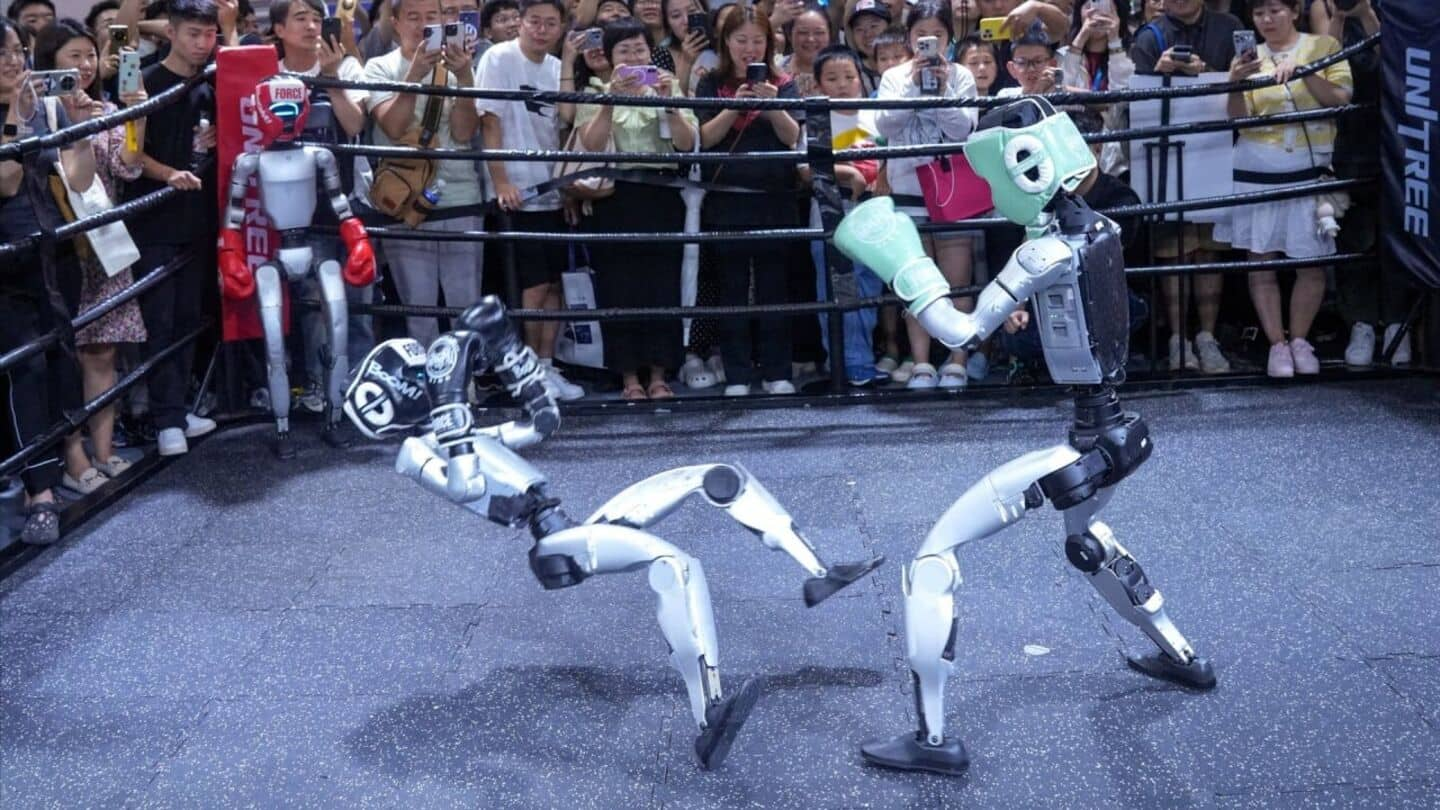
China now has more factory robots than other countries combined
What's the story
China has become the world's leading hub for industrial robots, with over two million machines working in its factories. The number is more than the total number of factory robots in all other countries combined, The New York Times reported, citing data from the International Federation of Robotics (IFR). The rapid growth in China's robotic workforce is largely due to government subsidies and strategic planning.
Robotic expansion
China's lead in automation
In 2024 alone, Chinese factories installed nearly 300,000 new robots. This is a stark contrast to the US, which added just 34,000 in the same period. The difference highlights China's lead over other industrial powers in automating its manufacturing sector. The robots in China perform a variety of tasks, such as loading boxes onto conveyor belts or welding car parts.
Technological advancement
Integration of AI with robotics
The robots in Chinese factories are increasingly being integrated with artificial intelligence (AI) systems, which help optimize operations and track performance. Some factories have even been able to reduce their reliance on human workers, while others are reshaping employee roles alongside automation. This shift highlights how China's industrial strategy is not just about increasing the number of robots but also improving efficiency and productivity through advanced technology.
Supply chain shift
Shift in supply chain dynamics
China's industrial strategy has not only increased the number of robots in use but also changed its position in the supply chain. Until recently, most robots used in Chinese factories were imported. However, by 2024, nearly three-fifths of these machines were made domestically. This shows that local manufacturers are catching up with their foreign counterparts and China's share of the global robot manufacturing market has increased to a third last year, surpassing Japan.
Manufacturing supremacy
Global manufacturing impact
The rise of factory automation in China mirrors its broader role in global manufacturing. By early 2023, Chinese factories were producing nearly a third of all manufactured goods worldwide. This is more than the combined output of the US, Japan, Germany, South Korea, and Britain. The use of robotics has given Chinese manufacturers an efficiency edge over international competitors and deepened the structural imbalance in global manufacturing capabilities.
Workforce transformation
Demand for technical skills
China's large pool of skilled electricians, engineers, and programmers has helped meet the demand for robot installation and maintenance. However, the demand for these specialists has outstripped supply, driving salaries for installation experts to nearly $60,000 a year. This growing need for technical expertise highlights how automation is transforming the workforce into one focused on high-skill support and integration rather than eliminating all human roles.